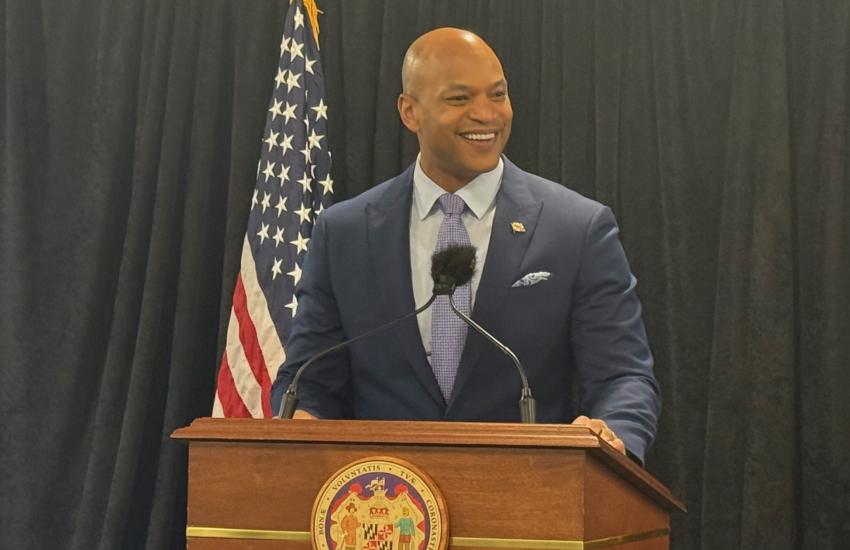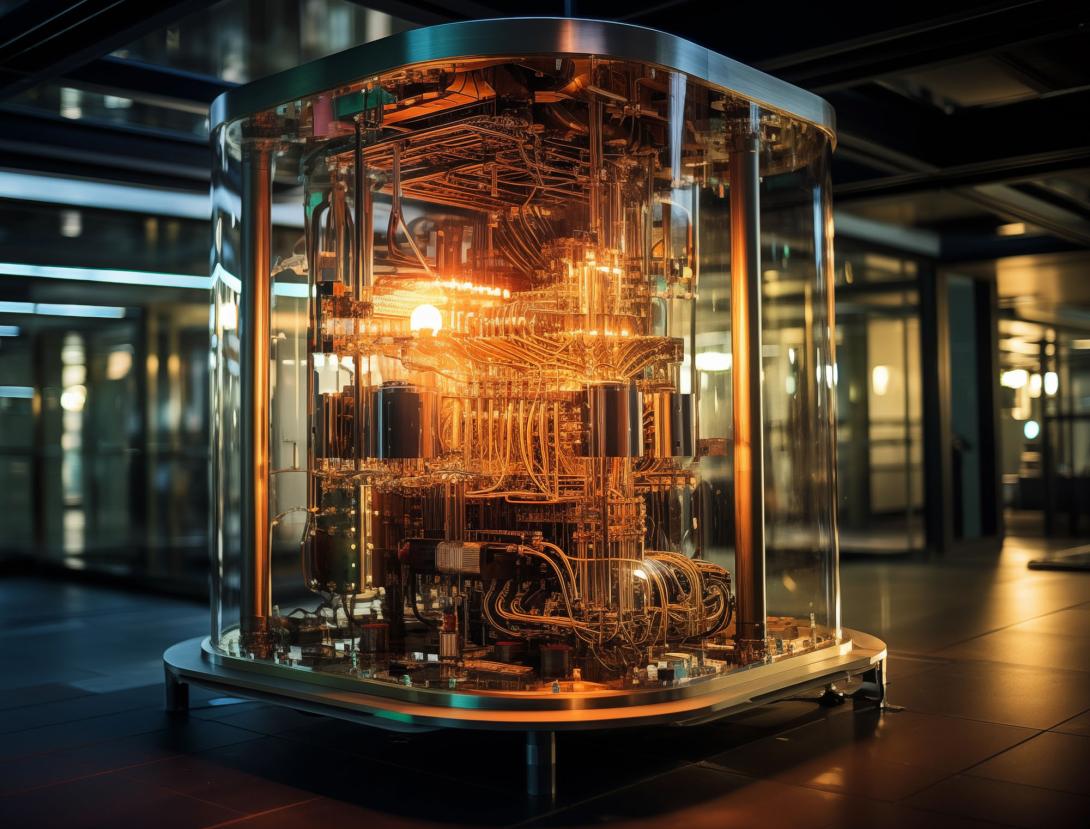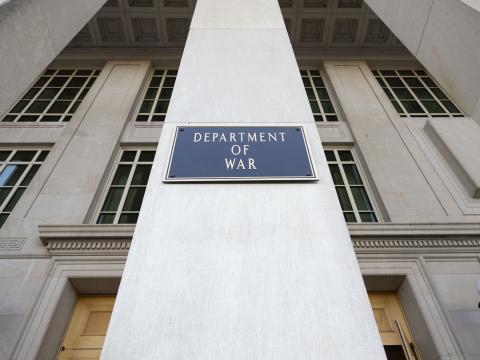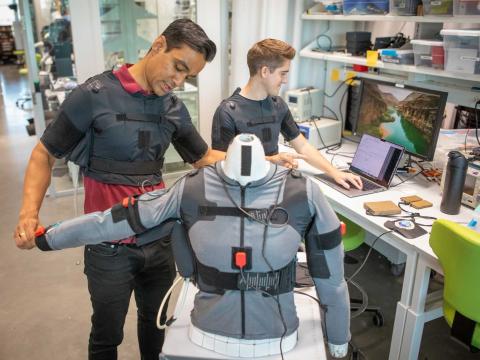DARPA Leverages Universities’ Quantum Expertise
The Defense Advanced Research Projects Agency, or DARPA, is forming agreements with U.S. universities to help advance the development of quantum computers.
The first step was a partnership with Maryland. In April, with the governor of Maryland, DARPA announced that it had reached an agreement with the state and the University of Maryland’s Applied Research Laboratory for Intelligence and Security (ARLIS). Under the agreement, dubbed the Capital Quantum Benchmarking Hub, the parties will work to evaluate quantum computing and related systems for national security use as well as commercial application.
The move would make the first quantum hub on the East Coast, said Maryland Gov. Wes Moore, speaking at the unveiling event at ARLIS on April 28 that SIGNAL Media attended. With economic growth on his mind, Gov. Moore sees quantum as a key part of his economic agenda.
“With the Capital Quantum initiative, we have a simple but powerful goal: to make Maryland the capital of the quantum world, and our announcement really helps us to unleash exactly that,” Gov. Moore said. “Quantum is going to have a remarkable impact on the human condition.”
The agreement between the state, ARLIS and DARPA will enable more funding, greater coordination and leadership, the governor noted. It will help the organizations leverage federal funding matches to the state’s quantum investments over the next four years. According to DARPA, the funding depends on the results achieved. If successful, DARPA and Maryland each would provide matching contributions of up to $100 million over that time.
“And that money is going to take us one step closer to achieving our goal of unlocking over $1 billion of public and private investment in Maryland’s quantum sector by 2030,” Gov. Moore stated.
For ARLIS, the “important partnership” is a great opportunity to advance quantum and its applied research in intelligence and security, said John Beieler, executive director of ARLIS.
ARLIS is responsible for solving hard national security problems, and in quantum science, is already tackling applications of quantum sensing, communications and networking, and computing.
“[It is] an incredible moment in which we find ourselves, one in which we can demonstrate and conquer new heights of scientific achievement,” Beieler noted.
Meanwhile, for DARPA, the Maryland agreement becomes part of its greater Quantum Benchmarking Initiative (QBI), which is already underway, shared Joe Altepeter, QBI program manager at DARPA. For the past 15 years, Altepeter has either set up or run almost every quantum computing program at IARPA and DARPA.
For the QBI program, Maryland and ARLIS offer DARPA key research and testing facilities needed by the agency’s experts to evaluate the quantum computing system offerings of the companies in the QBI program.
“A critical part of DARPA’s mission is to try to prevent strategic surprises, to challenge our assumptions ... and [the QBI] requires a huge team,” Altepeter noted. “We need the largest, most rigorous, best qualified test and evaluation team for quantum computing in the world. And assembling, training, enabling and deploying that kind of team, with those kinds of experts, is exactly what the QBI was founded to do. The partnership between DARPA and the state of Maryland, with the Capital Quantum Benchmarking Hub, is designed to bring exactly these tools to bear on the Quantum Benchmarking Initiative.”
The QBI is currently in Stage A, where the 16 down-selected quantum companies are providing the agency with the technical details of their intended methods of creating quantum bits—or qubits—the foundations of quantum compute.
The companies include:
- Alice & Bob—Cambridge, Massachusetts, and Paris (superconducting cat qubits)
- Atlantic Quantum—Cambridge, Massachusetts (fluxonium qubits with co-located cryogenic controls)
- Atom Computing—Boulder, Colorado (scalable arrays of neutral atoms)
- Diraq—Sydney, with operations in Palo Alto,
- California, and Boston (silicon CMOS spin qubits)
- Hewlett-Packard Enterprise—Houston
- (superconducting qubits with advanced fabrication)
- IBM—Yorktown Heights, New York (quantum computing with modular superconducting processors)
- IonQ—College Park, Maryland (trapped-ion quantum computing)
- Nord Quantique—Sherbrooke, Quebec (superconducting qubits with bosonic error correction)
- Oxford Ionics—Oxford, England, and Boulder,
- Colorado (trapped-ions)
- Photonic Inc.—Vancouver, British Columbia (optically-linked silicon spin qubits)
- Quantinuum—Broomfield, Colorado (trapped-ion quantum charge-coupled device (QCCD) architecture)
- Quantum Motion—London (MOS-based silicon spin qubits)
- QuEra Computing—Boston (neutral atom qubits)
- Rigetti Computing—Berkeley, California (superconducting tunable transmon qubits)
- Silicon Quantum Computing Pty. Ltd. —Sydney (precision atom qubits in silicon)
- Xanadu—Toronto (photonic quantum computing)


Stage B, which will start roughly in October, has DARPA spending a year “rigorously examining” these companies’ research and development approaches. During the final phase, Stage C, independent verification and validation teams will test the resulting hardware.
The goal is to see if any quantum computing approach “can achieve an industrially useful quantum computer” by 2033, according to the agency.
Altepeter is cautious about what DARPA could accomplish, warning that quantum was not a sure thing. The agency must separate the hype and potential of quantum computing from what will be the reality.
“If you had a really big, really great quantum computer, what is it going to be good for exactly, and how is it going to transform the world?” he questioned. “What are the metrics you use to measure that by? Is there anybody who is actually on a path to building one of these machines in the next 10 years?”
And in the physics world, there is no clear consensus about quantum computing, he continued. “Of the 10 smartest physicists that I know, I would say half of them are convinced this is going to be the most important technology of the 21st century,” he warned. “But the other half are actually convinced that not only are you never going to be able to build a quantum computer no matter what, but even if you did, it’s never going to do anything better than your laptop.”
Either way, DARPA’s university partners will play a key role in the test and evaluation cycle.
Part of DARPA’s plan is to leverage ARLIS’ connection to the broader defense and intelligence ecosystems, such as the Johns Hopkins University’s Applied Physics Laboratory (JHU APL), also in Maryland.
JHU APL had already been making “foundational efforts” to create new tools for evaluating [quantum-related] companies as part of a series of seed projects, Altepeter said. These tools will be crucial for gauging quantum capabilities. “It’s an honor to be able to work with them, and they are an absolute essential resource for the state of Maryland,” he shared.
The agency is now working on building other partnership agreements with other states’ universities.
“DARPA is open to partnering with any state on quantum computing if that state has already launched and funded an effort related to quantum computing, and if the specific nature of the state effort has the potential to directly contribute to the goals of QBI,” the agency stated.
As part of building the quantum ecosystem, DARPA made an agreement with the state of Illinois last year. The state is building a quantum campus at the former U.S. Steel South Works site on Chicago’s South Shore of Lake Michigan, just north of the Indiana border.
The state, which has a planned $500 million quantum budget outlay, is creating the Illinois Quantum and Microelectronics Park at the site, and the DARPA-Illinois Quantum Proving Ground agreement would drive quantum testing and evaluating companies to the park under the collaboration.
“It is tough to find out exactly if and how a quantum computer is going to be industrially transformative—and not just a good science project,” stated Altepeter. “And I think the stakes are also incredibly high.”





Comments